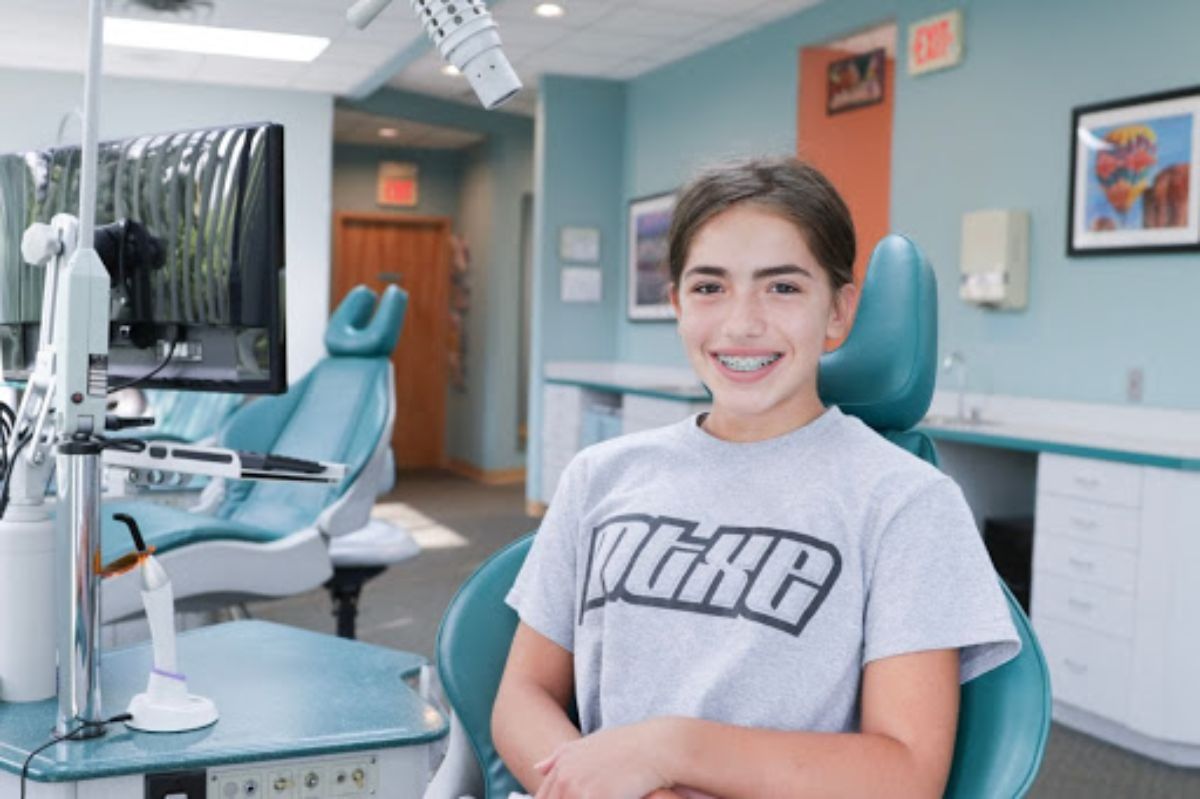Here at Humphrey Orthodontics, we know how much hard work, time, and dedication you put into successfully achieving a straighter, healthier smile. As you get closer to the day your braces come off or you use your last clear aligner, it can be tempting to think you’re through with orthodontic appliances forever, but don’t get too carried away! Although you deserve to celebrate finishing the most difficult part of the process, remember that this is only the first phase of orthodontic treatment. The second phase begins soon after your teeth have been straightened, and when it comes to maintaining your newly straightened smile, it’s every bit as important as the first. We’re taking a look at fixed vs. removable retainers so you can know just what to expect after your braces come off!
This second phase of orthodontic treatment is referred to as retention, and it focuses on consistent retainer use. Retention rounds out the treatment process and is an essential part of keeping your teeth in their new, straighter positions. If you’ve been a patient with Dr. Humphrey for any time at all, chances are good you’ve already heard us talk about how important retainers are, but you may not know much beyond that. To learn a little more about the different types of retainers and why wearing one is so crucial once your treatment is complete, keep reading below!
The importance of retainers
In your late teens and early twenties, you may notice a slight shifting occurring with your teeth. This phenomenon is known as “relapse,” and refers to the natural tendency of teeth to drift back towards their original positions after orthodontic treatment has been completed. Retainers are the key to preventing this relapse, by holding your teeth in their new positions and keeping this kind of natural drifting from occurring.
Your teeth aren’t the only things we want to stay put in their new position once treatment is complete! Teeth are not just fixtures in the jaw – each one is held in its socket by elastic ligaments that attach the roots to the bone. These ligaments are living tissues that are affected by the movement of the teeth, and it is this attachment that allows for the small movements of the teeth during the orthodontic process.
Braces place tension on and around the teeth, facilitating the formation of new ligaments, and sometimes even bone. The first phase of treatment is the remodeling phase, and once it is complete, the new tissues, ligaments, and bone will need time to stabilize. Without a retainer holding the new positions in place during stabilization, the teeth will almost always migrate back to their old positions. If you don’t wear your retainer as directed after your braces come off, you may find your teeth eventually start shifting back to their old positions, undoing all the hard work you’ve put into your orthodontic treatment.
However, at Humphrey Orthodontics, it’s easy to avoid relapse! Keeping your teeth in place is as simple as wearing your retainer as directed by Dr. Humphrey. The type of retainer you’re given will be determined by the specifics of your case, your preferences, your lifestyle, and your expected compliance.
The different types of retainers
In much the same way that orthodontic appliances have both fixed (braces) and removable (clear aligners) options available, we offer fixed and removable retainers as well. At Humphrey Orthodontics, you will often be given 1 set of retainers upon completion of the first stage of your treatment. The recommendation of which type depends on each individual’s case.
Fixed retainers
Fixed retainers will generally consist of a thin wire bonded behind the bottom or top teeth, or sometimes both. The wire stretches across several teeth, and dental care is similar to that of a patient wearing braces, especially when it comes to effective flossing. These can be a particularly helpful option for patients who have or had a large space between the two upper front teeth. Once orthodontic treatment is finished and the space is completely closed, a fixed retainer can be used to keep the space closed. Thanks to the bonded wire’s ability to hold newly straightened teeth in the ideal alignment over a long period, fixed retainers tend to have an excellent overall outcome. Plus, you never have to remember to wear them!
Removable retainers
When it comes to removable retainers, there are a couple of different options available. The Hawley and Essix models are both custom-designed to fit your mouth following treatment. Our Humphrey Orthodontics team will take an impression of your newly straightened teeth, then use it to create a retainer with either a clear plastic material (for an Essix retainer) or from wire and an acrylic material (for a Hawley retainer.)
Hawley retainers
The Hawley appliance is one of the oldest retainers and tends to be the most common as well. It’s also the retainer you’d be most likely to recognize! These retainers are made of stainless steel and kept in place by wrapping a wire around your teeth that have been combined with an acrylic arch that rests against the roof of your mouth. The metal wires can be adjusted to continue minor movement of the front teeth if needed. Although many orthodontists are moving away from this more traditional retainer, it can still be very useful in some cases.
Essix retainers
Essix retainers are made entirely of transparent plastic and look very similar to the clear aligners used with the Invisalign system. They are much less noticeable than traditional wire retainers and should last as long as you need them, as long as you care for them properly. These retainers may cover the entire arch of the teeth or go from canine to canine. Each one is molded to the unique shape of your mouth.
Cleaning your teeth is easier with either of these removable retainers, but you will have to remember to wear them daily. They’re also a lot easier to misplace or damage, so it’s important to be mindful of where they are at all times and to be careful when handling them.
Humphrey Orthodontics gives you a lifetime of straight smiles
It can sometimes take only a few days for teeth to begin shifting back to their original positions, especially in the first year after the first phase of treatment. Modern orthodontic knowledge tells us that the most successful smiles will need to wear some type of retainer indefinitely after the teeth have been straightened, but with a little patience and practice, this will become just another part of your daily routine before you know it.
Here at Humphrey Orthodontics, our skilled team is dedicated to finding exactly the right orthodontic treatment for you, including the type of retainer that will serve you best. For more information about retention after orthodontic treatment, get in touch with our Wentzville or St. Peters office today. It’s our goal to give you a beautifully aligned smile that lasts a lifetime!



